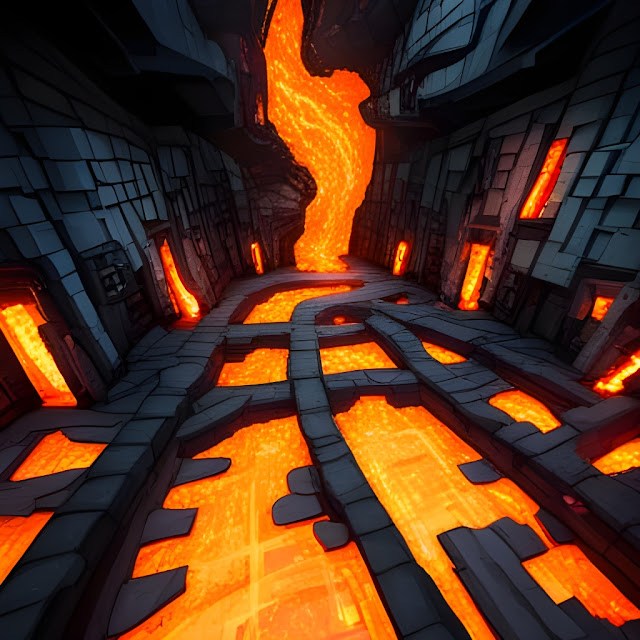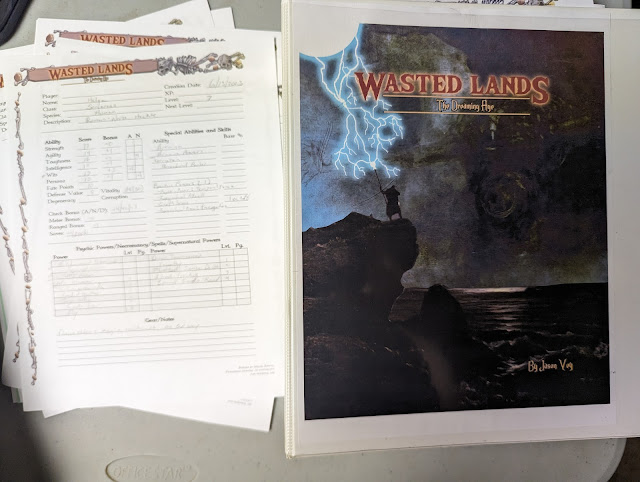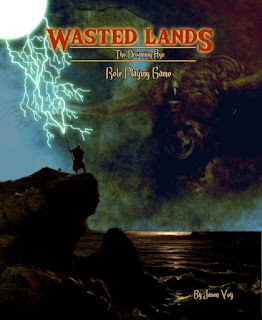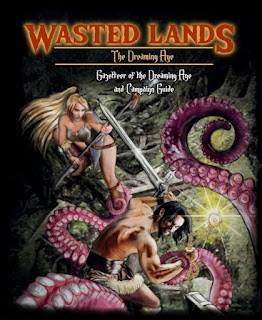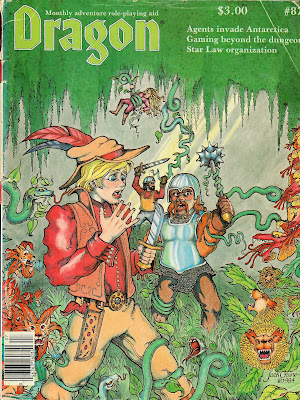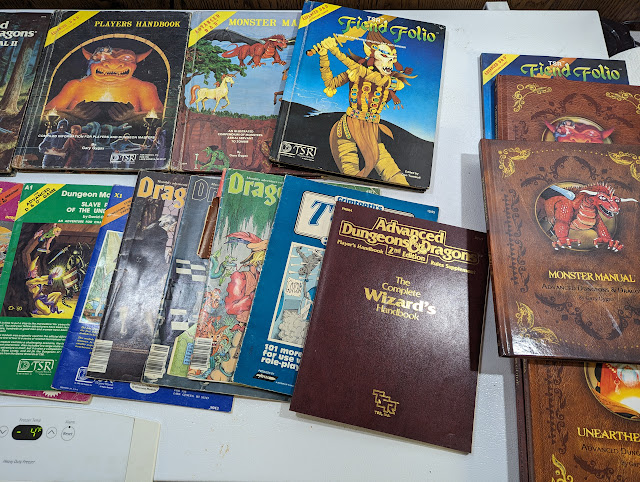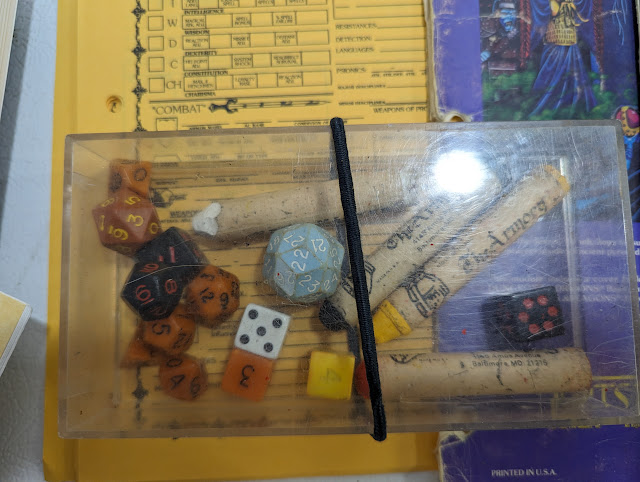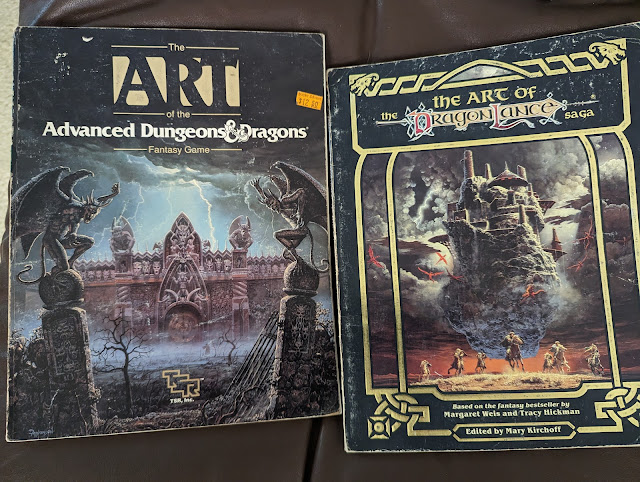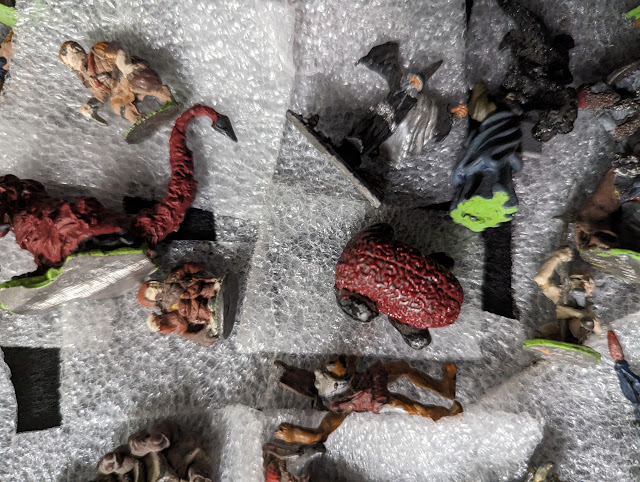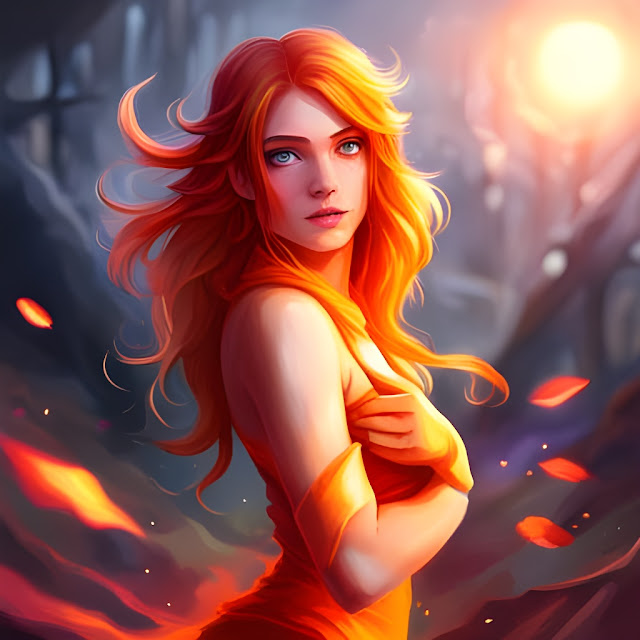 Halls of the Blood King
Halls of the Blood King is a scenario published by
Necrotic Gnome. It is written for use with
Old School Essentials, the Old School Renaissance retroclone based on the version of
Basic Dungeons & Dragons designed by Tom Moldvay and published in 1980. It is designed to be played by a party of Third to Fifth Level Player Characters and is a standalone affair, but can be easily added to a campaign by the Referee. What it primarily needs is a world where vampires are known about, either as actual threats or legendary ones, and perhaps an old tale about a vampire hunter having gone missing a century ago. Since it involves the vampires and the undead, if the scenario is run using
Old School Essentials Classic Fantasy, then a Cleric will be useful, and possibly a Paladin if it is being run using
Old School Essentials: Advanced Fantasy. Unlike the earlier, official scenarios for
Old School Essentials, such as
The Hole in the Oak and
The Incandescent Grottoes, it is not a suitable addition to the publisher’s own Dolmenwood setting. The scenario is also notable for winning the
2021 ENNIE Award for Best Adventure and the
2021 ENNIE Award for Best Cartography.
The Halls of the Blood King appears once a century, on night of a blood moon. It stays for that night and then is gone. It is home to the Blood King, the the first vampire, and on this night, as he does on nights like this on other worlds, he calls all of his children from across the lands to come pay him both homage and what they owe him—blood tax. The appearance of the Blood King and his mansion is a temporary stain upon the land where it appears, its baleful influence spreading fear and terror as every vampire in the land descends upon it and the lands and villages nearby... Several reasons are suggested why the Player Characters might want to break into the mansion. This includes rescuing any villagers who have been kidnapped from nearby, merely wanting to loot the place, or looking for a specific magical item known to be in the possession of the Blood King. Perhaps the most interesting are having the Player Characters seek revenge for a vampire said to have been lost in the halls of the Blood King—whether because one of their number is descended from the vampire hunter or they are hired by a descendant, or because they have been receiving the desperate dreams from a princess imprisoned by the Blood King, imploring them to rescue her. It is also possible to mix and match these hooks too.
The Halls of the Blood King follows the same format as the other scenarios for Old School Essentials. This includes an overview, which covers history, rumours, and a complete list of the adventure’s treasure by location. What sets it apart is two things. One is a time limit. The Blood King’s mansion is only present for one night. If the Player Characters stay too long, who knows what world or plane they will end up on? The other is a single page of vampire details, this included to save space from having to repeat their abilities in every monster entry, but it also makes it a handy reference for the Game Master—especially as it is reprinted on the inside back cover. Included at the end of the long list of their capabilities and unfortunately for the Player Characters, few vulnerabilities, are several alternatives to the Energy Drain ability, which leeches Levels, Experience Points, and Hit Points from an afflicted Player Character. Options include ability damage, permanent Hit Point loss, and a global penalty levied on all actions. Also included is a breakdown of the various factions and their relationships in
The Halls of the Blood King, and it is here that the scenario begins to shine.
The factions in the Blood King’s begin with the Blood King himself, bored and disdainful, but under the right circumstances willing to see the Player Characters as more then a food source. Around him is his court and its guests, several of them quite alien, but all wanting something, and in many cases having something to hide. His daughter—who of course, is the one sending dreams to the Player Characters of an imprisoned princess—plots with a desperate vassal and other allies to supplant her father. His mother—or is she?—now a Banshee, lurks, seeking recognition by her son. Below the mansion, the Blood King’s pet, the Blood Spider Queen, grown big and fat on diet of blood, wants her court to be the equal of his. Elsewhere, the vampire hunter, thought lost a century ago, hides out behind a barricade of traps, waiting for an opportunity to strike at the Blood King... All of these factions want something and see the Player Characters as a means to strengthen their hands. Some will prove to be the allies the Player Characters need to survive
The Halls of the Blood King, others not.
What this all means is that
The Halls of the Blood King is not an adventure at which to go full tilt. Players and their characters wanting to rampage their way through the halls and room of the Blood King’s mansion, will first face guards with flesh-ripping blades and then the vampires themselves. The immunity from mundane weapons, the charming gaze, and the ability to drain Levels combined their numbers means that the vampires are too tough to face directly—and that is for Fifth Level Player Characters, let alone Third Level. Instead, the Player Characters need to find a less direct way to deal with the Blood King and his vampires. The scenario provides several, including gathering information, finding certain important items, and of course, creating alliances. Whilst there are opportunities for combat in the scenario, what this means is that
The Halls of the Blood King is much more of a social and roleplaying scenario than it looks at first sight. Whomever the Player Characters decide to ally with, they have a chance to really change the
status quo at the Blood King’s court.
Physically,
The Halls of the Blood King is as well presented and as organised as previous scenarios for
Old School Essentials from Necrotic Gnome. The maps are excellent with excerpts used on every page where individual locations are described. The location descriptions use the same sparse, almost bullet-point style seen in the other other scenarios with key points in bold. There is plenty of rich detail in those descriptions though, such as Shadow Hounds that are as “
Dark as night” and “
Long and tall but very lean (as if stretched)” and dungeon stairs “
Made of rough hewn stone (looks like a stone beast’s gullet).” All of which makes the scenario very easy to use from the page. What really stands out is the artwork. Done in rich blues, purples, and reds with yellow highlights, it echoes the style of Philippe Druillet in his depiction of Michael Moorcock’s Elric of Melniboné, making
The Halls of the Blood King have more of a baroque look than a gothic one.
The Halls of the Blood King is not without precedent, all the way back to
Palace of the Vampire Queen from 1976. Of course, it would be remiss not to compare
The Halls of the Blood King with its more well known precedent,
I6 Raveloft.
The Halls of the Blood King is a far less grand affair, in every sense, lacking the Gothic romance backstory of
I6 Ravenloft’s Count Strahd von Zarovich and the love of his life, his former sister-in-law, Tatyana, and the epic scale of his castle. The lower scale has advantages, the mansion having less room for the seemingly endless swathe of the undead to be found in Ravenloft, making both exploration and accessing the social aspects of
The Halls of the Blood King that little bit easier. It also means that
The Halls of the Blood King is no mere imitation, possessing an atmosphere and sense of horror that is its own.
More social minefield than gory bloodbath—though it has plenty of potential to end that way—
The Halls of the Blood King is a genuinely challenging adventure, presenting a highly detailed and atmospheric vampire lair in which the Player Characters will have to tread very lightly if they are to survive, let alone succeed.
